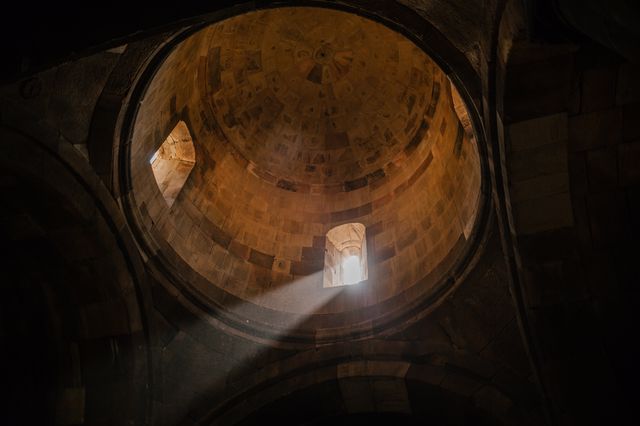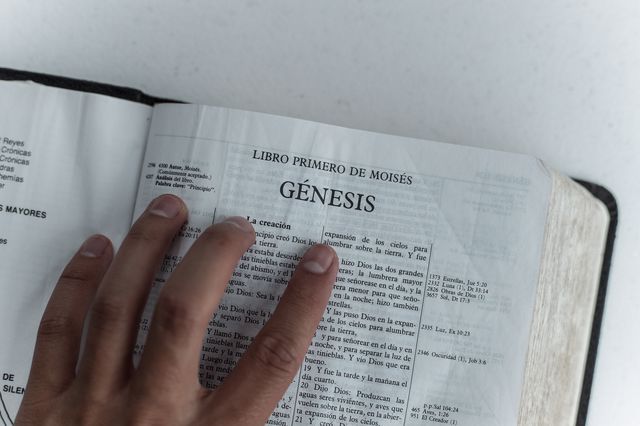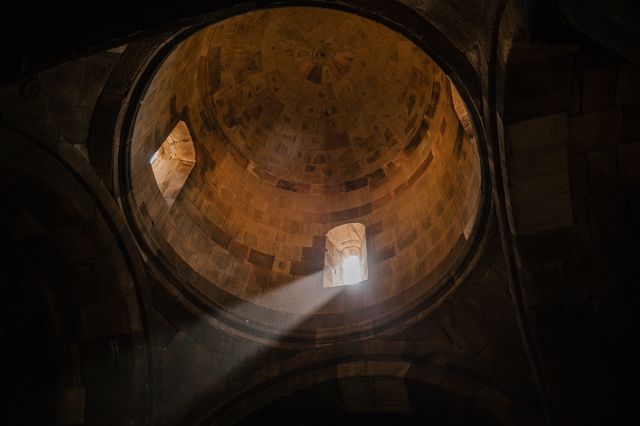
You are what you love. You are what you desire. We are exploring the idea that this description captures the essence of who we are as human beings. It is a description that is more encompassing that “You are what you think” or “You are what you believe.” But it is important to ask how this image of “you are what you love” fits with our identity as followers of Christ.
Many people have a mostly negative image of desire. When you think of desire, you may think of a feeling or an urge that needs to be tamed or controlled. If this is your stance and you are a person of faith, you look to God to be the source of your ability to do that taming and controlling. This can leave you with an image of God who is impassive. A God whose only role with desire is to give you the ability to control it.
This understanding belies the way the biblical story speaks of God. From the very beginning, God is passionately engaged with all of creation. In Genesis 1, God brings to life and animates the earth over the six days of creation. After each day, God declares that what has been created is good. The word for “good” is not used in a moral sense; it is an aesthetic word. It could be translated “beautiful.” God looks upon what God has created with wonder and delight.
In Genesis 2, when God creates humanity, God doesn’t just speak the man into being the way God creates in the first chapter. God takes earth and molds it. God breathes God’s spirit into the creature and it comes to life. In the same way, when God creates the woman, God uses part of the man. Again, like and artist, God shapes and forms. From God’s yearning and desire, God creates.

In Genesis 3, when the man and the woman disobey God, notice how God responds. God has told them that if they eat from the tree, they will die. They eat from the tree, but they do not die. God walks through the garden looking for them, wanting their presence. Where are you? To be sure, God does not like what they have done, and God describes the consequences of their actions. But then, God takes care of the by giving them cloths of skin. Even the expulsion from the garden is portrayed as an act of grace so they will not live in this fallen state forever.
So from the very beginning, God is portrayed as one who is deeply engaged, yearning and desiring the best for what God has created. But the images don’t stop there.
The language of God throughout the Bible is the language of yearning and desire. God is described as “merciful and gracious, slow to anger and abounding in steadfast love” (Psalms 103:8,). God is a woman who could no more forget her love and compassion than a mother could forget her nursing child. God states that we are inscribed on the palms of God’s hands (Isaiah 49:16).
The prophet Hosea describes God as one who woos and coaxes an unfaithful lover to return. God is the one whose “heart recoils within” and whose “compassion grows warm and tender” as God makes the decision not to execute a “fierce anger” (Hosea 11: 8-9). Throughout the history of the church, mystical writers have used the erotic images of Song of Songs to portray God as the lover who is yearning and searching for his beloved.
These images continue in the gospel story. God is the father looking everyday down the road and yearning for the return of his lost son. In John, Jesus asks questions like “What do you want? What are you looking for? Do you love me?” He doesn’t ask, “What do you know?” or “What do you believe”?
Corresponding to the use of the language of yearning and desire to describe God, this same type of language is used to describe humanity’s relationship with God.
The psalmist speaks of how he seeks God, of how his “soul thirsts” and his “flesh faints” for God. Another psalmist speaks of a soul longing and thirsting for the living God. Jesus does not talk about righteousness as a good idea; he speaks of hungering and thirsting for righteousness. Throughout the history of the church, spiritual writers have spoken of their spiritual journeys as a yearning and a desire for God’s presence. In his Spiritual Exercises, Ignatius Loyola invites any person who makes a retreat to “ask God our Lord for what I want and desire” at the beginning of every period of prayer.

If the language of God’s identity and our relationship with God is the language of desire, perhaps, our wants and longings and desires are not things have to be controlled. Instead, they are at the core of our identity, the wellspring from which our actions and behavior flow. Our wants reverberate from our heart, the epicenter of the human person. Thus Scripture counsels, “Above all else, guard your heart, for everything your do flows from it” (Prov. 4:23).
The language of desire to describe God’s nature and humanity’s relationship with God is found throughout the Biblical story. Even the defining event of the Christian faith–the passion and resurrection of Jesus–can be viewed through the lens of desire. The cross is not some legal transaction into which God enters to set the world right. Instead, the cross is God’s ultimate yearning for the world to be reunited with God. None of this is the language of a distant God who primary focus is obedience and the dutiful ordering of our lives into right and wrong.
I wonder why we have lost touch with these images of God as one who yearns passionately for reltionship with creation. It is important to recapture them and let them animate and shape how we order our lives. That it the topic we will consider in the next post.
Thanks for reading, sharing, and responding. I look forward to your comments.

This is a beautiful article and celebrates the loving, engaged God in our lives. Thanks for sharing – looking forward to Ventures on Sunday!
Loving and engaged…I like it. Brueggemann uses the phrase “passionate fidelity.” I like that one too.
Yes, see you Sunday.